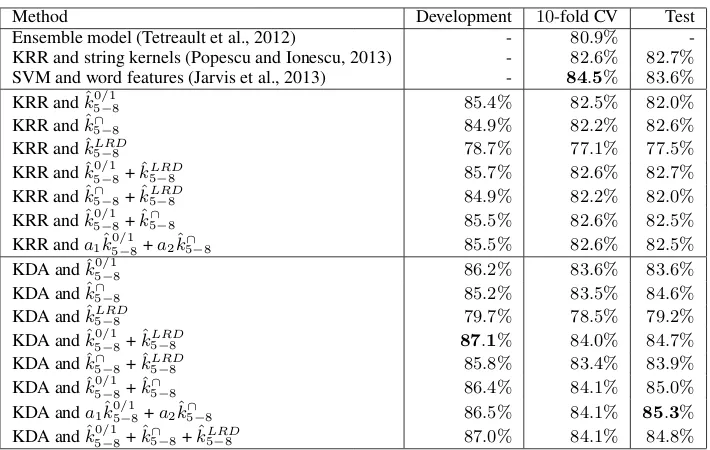Can characters reveal your native language? A language independent approach to native language identification
Full text
Figure



Related documents
JEPEGMIX2 also (i) avoids accumulating averagely enriched polygenic in- formation by adjusting for background enrichment and (ii) to avoid an increase in false positive rates
The differential diagnosis of lung transplant patients with declining allograft function weeks to months after transplant includes acute rejection, infection, airway complications
For the ana- lysis of ordered PASI response thresholds, a number of assumptions were made to facilitate modelling: a common- effects model was used to estimate the baseline
Using a combina- tion of adaptation by inoculation first into a fermentation with a solids loading of 7% w/v for 24 hours, followed by a 10% v/v inoculum (approximately equivalent to
1) To assess the level of maternal knowledge about folic acid among women attending well baby clinic in ministry of health primary health care centers in
To develop scaffolds that are capable of accelerating regeneration, we created a heparin/chitosan nanoparticle-immobilized decellularized bovine jugular vein scaffold
The rest of the thesis is structured as follows: in Section 2 we provide some theoretical background on regular types and their representation; in Section 3 we introduce CiaoPP’s
Thrombocytosis in an infant with TRPV4 mutation: a case report Mutations in the calcium channel gene Transient Receptor Potential cation channel subfamily V member 4 (TRPV4)